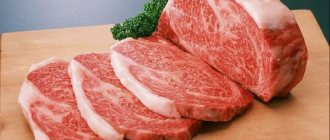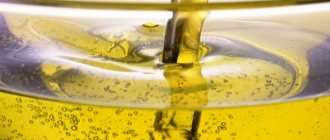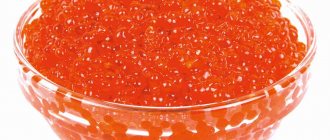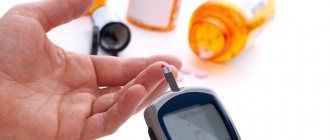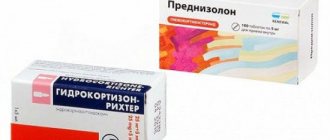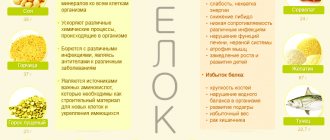An increase in blood cholesterol contributes to the occurrence of serious diseases: diabetes, atherosclerosis, stroke.
To normalize the indicators, doctors recommend following a diet, namely, reducing the amount of fat in the diet. However, not all fats are bad. For the normal functioning of all organs and systems, a person needs unsaturated fatty acids.
If Omega 6 and 9 can be obtained from plant foods and meat, then Omega 3 is found only in fish and seafood.
Fish also contains cholesterol. Therefore, in order to get the maximum benefit from fish, you should choose the right type and method of preparation.
Composition and benefits for the body
Humanity began to eat fish for a very long time. To date, the popularity of this product remains high. This is due to its numerous beneficial properties and nutritional value. Of the 20 thousand fish, several hundred are used as food. Fish can be either sea or freshwater (river or lake).
Sea fish is of greatest value, as it is more dietary. If the fat of river fish is similar in composition to poultry fat, then the inhabitants of the seas contain a large amount of polyunsaturated fatty acids.
Sturgeon and salmon breeds are considered the most useful. Freshwater ones benefit from a small amount of fat and an abundance of microelements in the composition. Caviar provides additional, significant benefits when consumed correctly.
The benefits of fish are as follows:
- High protein (protein) content with its excellent digestibility. Fish is digested twice as fast as meat and is absorbed almost 100%.
- Abundance of essential amino acids . It contains valine, tryptophan, methionine, which act as building material for cells. The body does not synthesize these acids, but can only receive them from the outside.
- Fats . Unlike animal fat, which contains bad cholesterol (LDL), fish oil contains predominantly good cholesterol (HDL). The melting point of fish oil is very low, which makes it easy to digest. Omega-3s increase the production of HDL, which promotes the removal of atherogenic fractions of cholesterol, prevents the formation of cholesterol plaques and prevents the risk of heart attack, stroke, ischemia, and hypertension.
- A huge amount of vitamins . There are vitamins A, C, E, which are powerful antioxidants. Vitamin B 12 is necessary for normal hematopoiesis.
- Content of micro- and macroelements . River rocks are rich in phosphorus, potassium, fluorine, iron, sodium and selenium. Marine salts additionally contain iodine and bromine.
Thus, fish and seafood reduce bad cholesterol and increase good cholesterol. Thanks to this, people who regularly eat fish have a 20% lower risk of heart disease.
The benefits of fish for the human body
Have you ever wondered why Thursday was fish day in the Soviet Union? At first, these orders related exclusively to the needs of developing the fishing industry and compensating for the shortage of meat products, but after that this tradition took hold and remained.
The thing is that doctors quickly noted the usefulness of such an innovation, which immediately affected medical statistics - the level of patients with cardiovascular diseases decreased. This is due to the consumption of fish. Later, scientists established a direct connection between the amount of fish products consumed and a decrease in the incidence of atherosclerosis.
And if we compare general disease trends, we can see that residents of coastal areas, where seafood is the basis of the diet, suffer from cardiovascular pathologies much less often than people of the mainland, far from the seas.
Photo of the sign of an ordinary Soviet canteen
Fish is valued not only for its taste, but also for its composition, which is incredibly beneficial for the body. Ask a doctor how much fish you should eat per year, and the doctor will tell you that every person should eat at least 4.5 kilograms annually.
Moreover, marine species are more useful than freshwater varieties, however, this does not mean that you need to give up river fish. Both have a rich composition of proteins, amino acids and microelements, although they differ in the amount of unsaturated lipids.
Chemical composition
Salmon steak
In order not to bore the reader, we will not analyze in detail all the chemical elements included in fish fillet, but we will dwell in more detail on those components that have a positive effect on the human body; in fact, thanks to them, fish acquires beneficial properties.
It contains:
- Valuable protein with essential amino acids (tryptophan, methionine, valine and others), which is well absorbed in the stomach. This is very important since we are largely composed of protein and almost all reactions are in one way or another related to the work of proteins (transport, signaling, protective, etc.). Fish is not only easily digested (almost 90%) but also quite quickly, for example, in comparison with young beef, 10% more useful protein will be absorbed and this will happen about 3-4 times faster. For these qualities, lean fish is considered the most valuable dietary product;
- Fish fat. It is thanks to him that fish with high cholesterol is considered useful. The thing is that unsaturated lipids contain a significant amount of omega-3 and 6 fatty acids, due to which the concentration of high-density lipoproteins in the body increases, and low-density lipoproteins, on the contrary, decreases. Because of this, the number of atherosclerotic plaques in the vessels decreases. Therefore, fish oil heals and protects blood vessels from diseases, and with regular use, the risk of developing ischemia of the brain and heart muscles is reduced;
- Vitamins A and E. These substances have certain specifics, firstly, they dissolve exclusively in fats, and secondly, they are not synthesized in the body and must be regularly supplied with food. Vitamin A is a source of retinol necessary for the functioning of the eye retina, cells and epithelial tissues. It ensures the proper functioning of the immune system, improves the condition of blood vessels, skin and its derivatives (nails, hair). Vitamin E or tocopherol helps the absorption of retinol, exhibits powerful antioxidant properties, and this is important because the integrity of many tissues is preserved, the risks of developing cancer are reduced, and the aging process is slowed down. If there is not enough vitamin E in the body, then it becomes very difficult to overcome atherosclerosis and its negative consequences;
- Vitamin B12. A very important component in the formation of blood components;
- Mineral components. Fish products prepared in any form always contain a significant amount of micro- and macroelements vital for our body. First of all, it contains a lot of: calcium, which is useful for bones and teeth; phosphorus, which is important for memory and brain activity; iron, without which the formation of hemoglobin molecules is impossible; potassium and sodium provide about a third of all transport processes; selenium, zinc, bromine and many other trace elements. Magnesium and potassium are of particular importance for the heart, which ensure the functioning of the heart muscles; therefore, those who often eat fish are least likely to die from myocardial infarction. Marine species contain a lot of natural iodine - without it, the proper functioning of the thyroid gland is impossible. Children need to eat seafood often because their bodies are in the process of constant intensive growth.
Salmon fillet with salt and pepper
Please note that marine fish species are much healthier than their freshwater counterparts due to their higher content of nutrients.
Fish fat
Fish fat
In the past, children were tortured by constant feeding of fish oil. He was forced to eat in schools, kindergartens, hospitals and sanatoriums. This was a program of national importance and, in fact, it was absolutely correct because a daily intake of a tablespoon of this not very pleasant-tasting product provided the child’s body with the nutrients necessary for normal development.
It was impossible to force adults, so they were strongly recommended to take fish oil constantly, especially since its price in those days was insignificant. But today you don’t have to torture yourself by forcefully swallowing an unpleasant liquid, since the pharmaceutical industry has begun to produce fish oil in gelatin capsules, which is convenient and does not cause disgust. Moreover, they contain more useful components than regular fat.
In order to reduce cholesterol, there are simple instructions - it is enough to drink several capsules for two weeks, depending on age and weight, and already from the 15th day they will notice that the level of cholesterol in the blood has decreased by 10 percent or more. Such therapy is recommended for people with atherosclerosis, high blood pressure, ischemia, heart disease, children and the elderly.
Fish oil capsules
Important. According to medical statistics, older people who regularly take fish oil suffer less from heart attacks, and there are 20% fewer cases of bone fractures.
Cholesterol content in fish
About 70-75% of cholesterol is produced by the liver and about 25% comes from food.
The amount of cholesterol depends on the variety. Based on fat content, the following product categories are distinguished:
- Low-fat varieties (less than 3% lipids): pike, perch, cod and many other freshwater fish.
- Medium-fat (about 8%): sprat, sea bass, carp, bream.
- Fatty species (from 9 to 19%): sturgeon, mackerel, saury.
- Very fatty (more than 20%): salmon, river trout, herring, eel, halibut.
The maximum amount of fat is present in fish in winter, and the minimum is after spawning, that is, in summer.
Interesting! Cod liver contains almost 73% fat. This is the fattest fish product.
The cholesterol content in different fish is presented in the table:
| Name | Amount of cholesterol per mg/100g |
| Mackerel | 310-350 |
| Herring | 95-105 |
| Pollock | 90-105 |
| Carp | 200-260 |
| Stellate sturgeon | 280 |
| Pike | 48-50 |
| Sole | 45-49 |
| Cod | 35-39 |
| Trout | 50-55 |
| Hake | 110 |
Daily value for high cholesterol
Doctors recommend that patients with high LDL cholesterol consume no more than 200 mg of cholesterol per day. That is, they can eat no more than 60-70 grams of mackerel or carp. But trout or pollock are allowed in the amount of 200-300 g. This is provided that they are the only source of cholesterol, and all other food is plant-based.
If on this day a person drank a glass of milk (100 mg) or ate a piece of chicken (200 mg), then no more than 100-150 g of low-fat fish can be consumed. It is better to eat fatty varieties on a separate day.
On average, nutritionists advise including standard portions of fatty fish in your diet, 150 grams 2-3 times a week.
Foods with high cholesterol levels
The disease of excess lovers
Atherosclerosis is one of the most common vascular diseases. It can be caused not only by excess nutrition, but also by bad habits.
1. Most cholesterol is found in fatty meats.
- beef and pork. Try not to buy fatty brisket, neck, tenderloin, ribs and other cuts of carcass that contain a large amount of fat.
Remember that a large amount of hidden fat
It is even found in pork fillet. A good alternative to such a product would be lean chicken and turkey.
2. Avoid such by-products
, like the liver, lung and brains. One serving (about 200 g) can contain most of the daily value of cholesterol.
3. Increased Saturated Fat and Cholesterol in Processed Meats
: ham, sausages, sausages, canned meats and smoked meats.
Even boiled sausage without lard contains hidden fats. In addition, these foods contain too much salt.
Fatty poultry also contains a lot of cholesterol.
- goose or duck. Avoid frying these foods in fat, trim off excess fat, and choose dark meat from the breast or legs of the bird after removing the skin.
5. Eggs are often accused of containing excess cholesterol. However, compared to fatty meat or smoked meats, eggs contain so much of this substance.
However, experts recommend limiting your consumption to one egg per day.
or prepare meals using only proteins. You shouldn’t completely give up eating eggs: they contain many useful substances.
6. Major suppliers of cholesterol are butter, cheeses, sour cream and full-fat yoghurts.
, which usually also contain large amounts of added sugar.
Nutritionists recommend consuming skim or low-fat milk and other dairy products containing no more than two and a half percent fat.
7. The lion's share of cholesterol enters the human body through semi-finished products, industrial baked goods, and desserts.
and fast food. These foods contain trans fats as well as high amounts of saturated fat.
Omega 3 content in fish
The benefits of fish lie mainly in their high Omega-3 content. This substance is not synthesized by the body, so it can only be obtained from food. The daily requirement for this substance is 250-300 mg.
Omega-3 content in different varieties:
| Variety | Amount of Omega-3 mg/100g | Daily value of product, grams |
| Salmon | 213 | 80 |
| Fresh tuna | 150 | 300 |
| Mackerel | 190 | 200 |
| Herring | 220 | 100 |
| Carp | 110 | 220 |
| Flounder | 50 | 250 |
| Cod | 30 | 330-500 |
| Salmon | 130 | 200 |
| Sea trout | 117 | 200 |
| Sardine | 190 | 180 |
| Som | 20 | 500 |
| Halibut | 120 | 200 |
Operating principle
How exactly do foods increase blood cholesterol? To understand the mechanism of their action on the body, it is enough to remember what kind of substance it is. It is an organic compound, a natural lipophilic alcohol, which is found in the cell membranes of many living organisms. The exception is plants and mushrooms. It turns out that it is part of any food of animal origin and, together with it, enters the human gastrointestinal tract, and from there into the blood.
However, this does not mean that absolutely all animal products increase cholesterol. It is important to consider two points here.
Firstly, they contain it in different quantities, but the difference is quite significant. For example, 100 g of chicken egg contains 570 mg, and the same amount of low-fat cottage cheese contains only 1 mg.
Secondly, some animal products are rich in omega-3 fatty acids and, under their influence, increase not harmful, but beneficial high-density cholesterol, which has a positive effect on the state of the cardiovascular system. These include most varieties of fish and low-fat dairy products.
conclusions
You cannot completely exclude animal products from your diet just because they contain cholesterol. You need to know which ones contain too much of it (their use will harm your health), and which ones contain not so much of it (they just need to be limited and coordinated with the daily intake of this substance).
It is necessary to distinguish which foods increase good cholesterol and which ones increase bad cholesterol. The former must be included in the diet, the latter must be excluded.
Proper use and preparation
If you have high cholesterol, it is important that the fish is cooked properly. Allowed to boil, bake or steam. You can also cook fish cutlets. When cooked, the amount of cholesterol in fish decreases slightly. The most optimal side dish for fish are vegetables (stewed, baked, raw), fresh herbs, and a little boiled rice.
It is prohibited to eat fish prepared in the following ways:
- Fried, especially breaded. In this case, the amount of fat, carcinogenic substances that provoke the development of cancer tumors, increases.
- Smoked. Excess salt and carcinogens have a negative effect on the body.
- Salty. Salt retains fluid in the body and increases blood pressure.
- Raw (in Japanese dishes). In the absence of heat treatment, the product retains parasites, E. coli and other dangerous components.
- Paired with fried potatoes. Despite the popularity of this dish, it is prohibited if you have high cholesterol.
Best Recipes
If a doctor advises you to follow a diet, this does not mean that the menu will be boring and bland. There are many different recipes that you can use to prepare delicious dietary fish dishes.
Steamed cod with vegetable side dish
Marinate cod pieces (about 1 kg) in lemon juice mixed with garlic, soy sauce, and sunflower oil for 25 minutes. Liquid ingredients are taken in approximately 50 ml, soy sauce - about 30 mg, as it contains a lot of salt. You can add a mixture of Provencal herbs to the marinade.
For garnish, take potatoes, zucchini, cauliflower in equal parts, cut into cubes. Place vegetables-fish-vegetables in the bowl of a multicooker or steamer. Set to steam cooking mode. Cook for no more than 20 minutes. Serve the finished dish with dill and lemon slices.
Thanks to the spicy marinade, the dish acquires an exquisite taste, and vegetables will add satiety to it.
Rainbow trout in foil
Clean, gut, and rinse medium-sized trout. Mix greens (parsley, dill, marjoram sprig) with vegetable oil. Stuff the belly of the trout with this mixture and add a slice of lemon. Wrap the fish in foil to prevent the juices from leaking out during cooking.
Place the fish in a hot oven and bake for about 25 minutes. Serve trout in foil or place on a platter. It will be complemented by boiled rice and fresh herbs. This dish becomes very tender and juicy, since the foil retains all the juice that is released.
What kind of fish is healthy?
Freshwater fish species
Now let's talk in more detail about what kind of fish to eat if you have high cholesterol. Even if a person’s blood levels are found to exceed the norm, in most cases there is no need to give up fish. Only in the most advanced situations do doctors put the patient on a very strict diet, and in other cases its use is even recommended, of course, in acceptable doses.
This is because fish is a valuable source of polyunsaturated fatty acids, which can reduce the concentration of low-density lipoproteins, and therefore bad cholesterol. In addition, lipid metabolism improves if it is disrupted.
At first glance, it seems absurd to eat fatty fish with high cholesterol, however, for people suffering from atherosclerosis, salmon, chum salmon, and other types of salmon fish are the most useful. In order for the body to benefit, it is important to monitor the quality of the products purchased; they must be fresh, caught in ecologically clean regions.
Otherwise, you can get poisoned because adipose tissue is a place where harmful substances and toxins accumulate.
In addition to expensive red fish, more affordable varieties are recommended, which can also have a beneficial effect on the human body:
- various types of sardines;
- tuna;
- herring;
- trout;
- halibut and others.
Note. Fish will be useful for atherosclerosis if eaten boiled or baked.
For those who are not able to afford the named species for frequent consumption, you can successfully replace them with the usual, universally recognizable Atlantic herring, but you should not buy herring, which contains quite a lot of salt. There are inexpensive fresh frozen fish in stores today. We recommend baking it with lemon juice and Mediterranean spices, which is healthy and very tasty.
For those who still do not want to take risks and do not intend to eat fatty fish, nutritionists advise buying cod species, pollock or halibut. They are classified as dietary products; they are not able to increase the number of atherosclerotic plaques, but can contribute to a slight elimination of cholesterol. The optimal dosage in this case is 200 grams of boiled product twice a week.
Fish for atherosclerosis
If you have atherosclerosis, you should not eat smoked fish
In order not to harm your body and get the most benefit from the product, fish must be prepared in accordance with certain instructions.
If you have high cholesterol, you should not:
- fried fish in oil because it is very high in calories and depleted in nutrients;
- if the dish has not undergone thermal or chemical treatment properly, since life-threatening parasites may remain in its tissues;
- salty products thicken the blood, which slows down the blood flow, and in case of atherosclerosis this is contraindicated;
- Smoked fish is full of preservatives, harmful substances, such as carcinogens, and it also contains a lot of salt.
The most acceptable way to prepare fish is boiling.
This thermal processing reduces fat content and preserves all useful components as much as possible. The same applies to steamed, grilled or oven-cooked foods. In order to choose quality products, listen to these recommendations:
- give preference to small and medium-sized carcasses because the older the animal, the more harmful substances accumulate in it;
- the smell should be natural without the slightest hint of staleness, categorically refuse fish with a smell;
- Fresh fish should have bright red gills;
- the carcass should be elastic and, after pressing, quickly restore its original shape; if the dent remains, then it is better to refuse the purchase;
- pay attention to the color, the range may be different, but for each species it has its own characteristic color.
Fish should be stored in the refrigerator, preferably gutted and salted for no more than three days; if frozen, the shelf life can extend for months, but this significantly reduces its taste.
Recommended Recipes to Lower Cholesterol Levels
Steamed dietary salmon
For those who want to combine business with pleasure, we offer several popular and simple recipes to reduce the amount of bad cholesterol in the body:
- Steamed salmon. Rinse fish steak (0.5 kg) and remove water from it with a paper or clean rag towel. Salt and pepper to taste and add your favorite spices, marinate in the juice of half a lemon for an hour. Then we place the salmon steak in the form where it will be baked, after greasing it with sour cream or olive oil. Next, stir in a double boiler or water bath and cook for about 40-50 minutes;
- Baked Atlantic herring. For three medium fresh frozen herrings, prepare one lemon, olive oil, salt, pepper and spices (add at your discretion). We clean the carcass and gut it, you can cut off the tail and head, wash it and rub it with salt, spices and lemon juice. We recommend using coriander, thyme, paprika, and basil. Grease a baking sheet with oil, lay out the herring, pour over lemon juice. Place the remaining zest nearby. Bake at 200 degrees for 30-45 minutes, remove when ready.
Mashed potatoes or baked potatoes are a good side dish for these dishes. The flavor range will be perfectly complemented by seasonal vegetable salad.
Baked herring
Possible harm and contraindications
Despite the enormous benefits of fish, it can be harmful. The fact is that freshwater and marine life tend to accumulate harmful chemicals from water. Salmon and tuna are especially likely to accumulate lead, arsenic and other heavy metals.
Some species (sturgeon, trout) are raised in special farms. Unscrupulous manufacturers use various additives to add color and increase the size of carcasses.
It is strictly contraindicated to eat this product in its raw form, especially for pregnant women and small children. Parasites are often invisible to the human eye, but cause enormous harm to the body.
It is also prohibited to eat:
- unfamiliar fish species;
- caught in “suspicious bodies of water”;
- sold in unauthorized places without appropriate documents (on the street), since it is unknown where and when the fish were caught;
- carcasses with external damage, ulcers, unhealthy plaque, and unpleasant odor.
When it matters
For hypercholesterolemia
If, with an elevated level of total cholesterol in the blood (more than 5.2 mmol/l), you continue to eat foods of animal origin, which raise it even more, the risk of developing atherosclerosis, ischemia and heart attack increases several times. In the absence of changes in diet, such people’s well-being sharply worsens: blood pressure rises, tachycardia begins, and body weight increases.
For atherosclerosis
With this diagnosis, growths form on the inner walls of blood vessels, which are nothing more than precipitated LDL crystals. If you continue to eat foods that increase bad cholesterol, such plaques will become more and more numerous. As a result, they lead to blockage of blood vessels, which can result in stroke, heart attack and even death.
For diabetes
Elevated blood glucose levels lead to disturbances in fat metabolism in the body. As a result, the amount of lipids increases. Therefore, atherosclerosis, obesity, arterial hypertension and other diseases are constant companions of diabetes mellitus. In this regard, people with this diagnosis need not only to be able to count the number of bread units in foods and take into account their glycemic index, but also to know which of them increase the concentration of LDL in the blood in order to limit their consumption.
For example, the GI of chicken liver is 0, and diabetics do not consider it necessary to exclude it from their diet. But per 100 g of this offal there are 492 ml of cholesterol - and this is a fairly high figure, indicating that its consumption should be limited.
When losing weight
When preparing a diet for the next diet, those losing weight usually exclude from the menu food of animal origin with a high fat content. Lamb, sausages, pork, many offal products, even poultry (duck, goose), sea fish, fermented baked milk, sour cream, and cream are prohibited. If you look at the table of cholesterol content, it is in them that its level will go off scale. And everything is completely opposite with low-fat foods, which are allowed by most diets: chicken, river fish, low-fat kefir with cottage cheese, etc. They contain less cholesterol.
There are exceptions. For example, when losing weight it is recommended to eat beef and veal, but not if you have atherosclerosis. They contain little fat and plenty of cholesterol. And vice versa: fatty fish are prohibited in diets, but if LDL levels are high, they are recommended because they contain healthy omega fats.
For any diseases of the cardiovascular system, nutritionists recommend excluding from the diet foods that increase the level of bad cholesterol. They significantly worsen the patient's condition.
We select a quality product in the store
In order for a product to bring maximum benefit and pleasure, it should be chosen correctly. It is better to purchase fish in large stores, where they can provide a certificate.
The chilled version is preferable, as you can ensure its freshness. For frozen fish, expiration dates should be indicated on the packaging; there should not be a lot of ice in the bag, this may indicate repeated freezing.
Some rules for choosing chilled fish:
- Buying medium-sized carcasses indicates the “youth” of the fish.
- The surface of the fish should be smooth, without ulcers or plaque.
- When you press on the pulp, it should return to its original appearance in a few seconds. Otherwise, it's an old copy.
- The smell of a fresh product is not sharp, subtle, which indicates its freshness.
At home, store fish for no longer than 2 days in the refrigerator or up to 2 months in the freezer.
Selected recommendations
People who already suffer from atherosclerosis, hypertension, diabetes, excess weight and CVD should definitely print out lists of foods that increase blood cholesterol levels. For them, creating the right menu can be a matter of life and death. By correctly distributing the “green” and “yellow” lists in the diet and abandoning the “red” and “black” ones, you can normalize LDL levels and significantly improve your well-being.
Those who adhere to the principles of proper nutrition or have a predisposition to CVD should strictly adhere to the daily intake of cholesterol (300 mg). There are tables showing how much of this substance is contained in a particular product - they allow you not to exceed the recommended value (presented below). This will protect the cardiovascular system from many problems and reduce the risk of diseases associated with it.
Fast food
Separately, it is worth mentioning foods that increase cholesterol levels by as much as 45%. They can be included in two lists at once - “red” (because they themselves contain this harmful substance in large quantities) and “black” (they do not contain it, but they must be excluded from the diet forever).
Fast food should be eliminated from your diet forever
This is everyone's favorite fast food:
- hot dogs;
- hamburgers;
- cheeseburgers;
- sandwiches;
- nuggets;
- shawarma, etc.
They contain a large amount of trans fats, which are harmful to blood vessels and health in general. They are contraindicated in almost all diseases.
Sushi
The question immediately arises about equally popular sushi. The situation with them is different. Those that include salmon, tuna and eel are definitely healthy as they contain omega fats. At the same time, take a closer look at what else was used to prepare them. Many sauces, Japanese omelette, caviar, soft cheese can increase LDL in the blood. In addition, if the fish is fresh, it is healthy; if it is smoked, it is better not to order such rolls.
The safest: Philadelphia, California, Unagi, Maguro (in their classic version).
Tempura should be avoided, since it is not known exactly how they are baked - with the use of trans fats or not.
Therefore, conditionally, sushi, rolls, gunkans and other fish dishes of oriental national cuisine can be attributed to the “yellow” list of products. Their use should be limited and the composition should be studied more carefully.
The benefits of fish oil for atherosclerosis
Everyone knows about the benefits of fish oil. Now it is produced in capsules, which makes the supplement convenient for adults and children to take.
Fish oil is indicated for those who cannot, for some reason, eat fish. Useful properties of the product:
Normalization of heart function.- Cleansing blood vessels from cholesterol plaques.
- Improved metabolism.
- Improved vision.
- Strengthening hair and nails.
- Normalization of bile production.
- Boosting immunity.
When choosing a supplement, you need to pay attention to the content of components such as DHA and EPA. Without them, fish oil is practically useless. The total amount of these acids should be 700 or 100 mg.
Fish is an essential dietary product for patients with high cholesterol. Different varieties contain different amounts of fat and Omega-3. To maximize the benefits from consumption, the product should be selected and prepared correctly.
Lists
All foods that increase blood cholesterol are conventionally divided into three main lists, which should become a reminder for everyone who is predisposed to cardiovascular diseases. There is also an additional fourth, but it is somewhat different from the rest.
"Green" list
What's included: Foods that increase good cholesterol.
Rules of use:
- Include regularly in your diet.
- Fish, meat and seafood should be subjected to steam heat treatment.
- Other cooking methods are allowed, but are no longer as useful.
- Frying is prohibited.
- Make sure that the level of cholesterol consumed does not exceed the daily norm.
Their composition: contains healthy omega fats (PUFAs).
Fish contains healthy omega fats and only increases “good” cholesterol in our body.
Effect on the body:
- do not increase LDL levels - only HDL;
- strengthen the walls of blood vessels;
- cleanses them of atherosclerotic plaques;
- prevent the development of many CVDs.
The first “green” list is foods containing cholesterol:
- carp, wild salmon, pollock, halibut, sardines in oil, stellate sturgeon, herring, mackerel, tuna, eel, trout, pike;
- kefir (1%), whey, homemade cheese (no more than 4% fat), low-fat cottage cheese;
- shrimp, crayfish;
- lamb.
The second “green” list is cholesterol-free foods:
- avocados, oranges;
- Brussels sprouts, sweet potatoes, eggplant;
- unrefined olive oil and canola;
- walnuts, almonds, hazelnuts, peanuts, pistachios;
- brown rice;
- soybeans, lima and red beans;
- green and black tea;
- bitter chocolate, dry red wine;
- berries (all sour).
If a blood test shows that HDL levels are below normal (women <0.78 mmol/L, men <0.7), you need to increase your consumption of foods that increase healthy cholesterol. Those that appear on the first “green” list can be included in the menu every other day. Those in the second - daily and in sufficient quantities. At the same time, diabetics should take into account their GI (for example, in sweet potatoes it is prohibitive and equal to 70 units), and those who are overweight should take into account their calorie content (for avocado it is 212 kcal).
"Yellow" list
What is included: foods that, when consumed in moderation and properly, do not increase blood cholesterol.
Rules of use:
- Include in the diet 2-3 times a week in limited quantities.
- Steam or grill meat, boil, stew, bake, but do not fry.
- First, remove fat and skin from it and rinse thoroughly.
- Dairy products should be of medium fat content, as natural as possible.
- Eggs - 1 pc. no more than 2 times a week. Preferred dishes: poached, in a bag, omelette. It is not advisable to boil it until it gets too hot.
- Make sure that the level of cholesterol consumed does not exceed the daily norm.
Their composition: cholesterol level is average, they are sources of healthy proteins.
Wild meat is an excellent source of healthy proteins, but you shouldn't eat it too often.
Effect on the body when used correctly:
- allow you to control the balance between good and bad cholesterol;
- When losing weight, they help maintain muscle mass;
- useful for diabetes.
“Yellow” list of foods that increase LDL levels:
- game (roe deer, venison);
- turkey;
- natural yogurt;
- kefir (more than 1%, but less than 3%);
- goat milk;
- horsemeat;
- rabbit meat;
- chicken breast;
- milk (more than 2% and less than 3%);
- cream (less than 30%);
- cottage cheese (with any percentage of fat content);
- broiler chickens;
- eggs.
Products on the yellow list only increase cholesterol if consumed too often and in large quantities. Therefore, you need to be able to limit them in your diet.
"Red" list
What's included: foods that increase bad cholesterol.
Rules of use:
- Prohibited for use in any form.
- They need to choose an equivalent alternative: chicken breast instead of beef and pork, low-fat dairy products instead of fat, etc.
- If there is a need to eat them (at a party or for medical reasons), do not abuse it. Portion size is minimal. Remove all fat from meat.
Their composition: high cholesterol and fat content.
Effect on the body:
- increase the level of low-density lipoproteins in the blood;
- promote the formation of atherosclerotic plaques;
- increase the risk of developing atherosclerosis and other CVDs;
- promote weight gain;
- worsen the condition in diabetes and in old age;
- disrupt lipid metabolism, slow down lipolysis and general metabolism.
Powdered eggs are one of the leaders among products in terms of the content of bad cholesterol.
“Red” list of foods that increase LDL levels:
- beef;
- boiled, uncooked smoked sausage;
- chicken thighs and drumsticks;
- butter;
- milk (more than 3% fat);
- liver pate;
- liver, kidneys, hearts, brains (beef, pork);
- sausages;
- pork;
- cream (more than 30%);
- sour cream;
- hard and processed cheese;
- duck;
- beef tongue;
- egg powder.
Many people, considering chicken a healthy protein product, do not even suspect that some parts of it are quite harmful for cardiovascular diseases and increase LDL levels. Others buy milk at the store, not paying attention to its fat content, and anything more than 3% worsens the condition of blood vessels and well-being. Therefore, it is worth taking a closer look at this list.
"Black list
There is another list that is important for those who suffer from hypercholesterolemia, CVD, diabetes and excess weight.
What is included: products that do not contain an ounce of cholesterol, but despite this, they greatly increase its level in the blood, acting through other factors.
There is only one rule for their use: exclude them from the diet completely. There is no need to replace them with anything, since the benefit from them is minimal.
Their composition: do not contain cholesterol, are most often simple carbohydrates, and have a high glycemic index.
Effect on the body:
- disrupt fat metabolism, lipolysis, and general metabolism;
- increase LDL levels by causing a sharp surge in blood glucose;
- promote the formation of plaques in blood vessels;
- provoke weight gain;
- increase the risk of developing diabetes.
They should be avoided not only by those who are at risk of developing atherosclerosis, but also by everyone who values their own health. They are also strictly contraindicated for diabetes and weight loss.
“Black” list of foods that increase LDL levels:
- confectionery products: mousses, meringues, cakes, marzipan, cream, soufflé, cakes, eclairs;
- sweets: candies, preserves, jam, marshmallows, chocolate, jelly, marmalade, grilled fruit, jam, candied fruits, marshmallows, halva, confiture, pies, cheesecakes, rolls, muffins, doughnuts, cupcakes, Easter cakes, gingerbreads;
- trans fats: butter, refined vegetable oils, margarine, mayonnaise, fried peanuts, puffed corn, deep-fried dishes, chips;
- coffee, alcohol (except red wine), carbonated drinks.
If you know how to use these lists and correctly consume the products indicated in them, you don’t have to worry about your health and test results. With such diet therapy, if combined with drug treatment of hyperglycemia, the tests will be normal (if the disease is not advanced).
How to cook fish properly
For the correct preparation of a diet, dry information about which fish is useful for lipid imbalance is not enough. You need to know how to prepare it correctly. The most appropriate cooking methods are: steaming, baking and boiling . Follow these tips:
- Choose fresh fish carefully – it has a specific, subtle aroma. It should not be rough or unpleasant - in this version, the fish, most likely, already has an impressive shelf life and is not suitable for consumption.
- Another important criterion for fresh fish is the elastic fillet. After pressing, the pulp should immediately return to its shape, without leaving a fingerprint.
- Give preference to small or medium sized fish. Larger individuals contain more undesirable substances and elements.
- The pulp can have different colors depending on the variety - from a grayish tint to red.
It is permissible to keep fresh fish for two to three days in the refrigerator, or freeze it in the freezer for up to several months. When cooking, it is always necessary to carry out sufficient processing, since fish products contain parasites that are not externally identified by human vision - seafood is a source (one of the main) of dangerous helminths.
You should not pay attention to fried dishes, since this type of cooking destroys most of the beneficial vitamins and elements in seafood. This is the advantage of boiled, baked and steamed dishes. Below is a number of fish recipes as part of hypocholesterol diet therapy.
Steamed salmon
For this dish, we will need salmon fillet (steak, approximately 500 grams), one lemon, low-fat sour cream to taste, salt, pepper, a mixture of herbs. The steak should be washed and dried with a regular cloth. Then rub on both sides with the prepared seasonings - salt, pepper, etc., squeeze lemon juice on top and set aside to marinate for half an hour. At the end of the marinating time, spread the salmon with sour cream and steam for 50-60 minutes. Ready!
Kinds
Cholesterol itself is neither bad nor good, it all depends on its conductors. Imagine that you drink a glass of water - it will be useful and pleasant. But if you eat a piece of ice, it can burn your throat, although it is the same water, just in a different form. It's the same with cholesterol.
Bad cholesterol
If the role of transport is performed by low-density lipoproteins, then they carry cholesterol into the arteries and it is deposited on the walls. This plaque can reduce the clearance of arteries and increase the risk of blood clots. This is how atherosclerosis, high blood pressure and cardiovascular diseases begin.
Good cholesterol
High-density lipoproteins return excess cholesterol to the liver, which processes it. This helps reduce plaque in the arteries and reduce the risks of heart disease and stroke.
